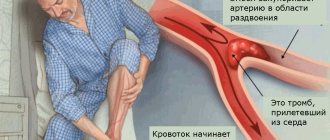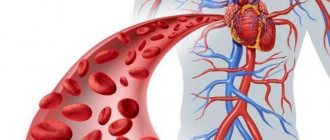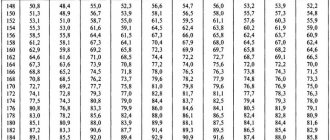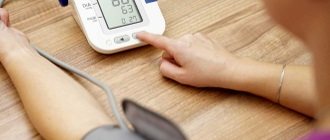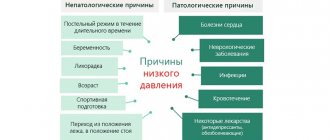Hypotension, or, as this phenomenon is also called, arterial hypotension, is a condition of the human body in which blood pressure is reduced compared to normal levels. The norm is the ratio of systolic (upper) and diastolic (lower) pressure 120/80 mmHg. Art. (small deviations are acceptable). Hypotension is characterized by a decrease in blood pressure below 90/60 mmHg. Art. It is necessary to treat hypotension when it adversely affects the general condition of the human body.
There are several types of physiological lowering of blood pressure:
- hypotension as an individual variant of the norm, not accompanied by any unpleasant symptoms;
- compensatory adaptive hypotension (develops in people living in high mountain areas);
- orthostatic hypotension (due to sudden movement of the body from a horizontal to a vertical position, due to active physical exercise);
- postprandial hypotension (a decrease in blood pressure after eating).
Causes of hypotension
Depending on the causes of this condition, the following forms of hypotension are distinguished.
Primary. This is a special form of neurosis-like disease of the vasomotor centers of the brain. The main causes of primary hypotension: severe stress, prolonged emotional stress.
Secondary. It is often a concomitant pathology with certain diseases of the thyroid gland, hepatitis, anemia, tumor diseases, gastric ulcers, tuberculosis, rheumatism, cirrhosis of the liver, brain injuries, when taking a number of medications, etc.
Often, hypotension is a sign of vegetative-vascular dystonia (VSD), a condition of the body that is characterized by disruption of the autonomic nervous system, which regulates the functioning of organs. This can lead to disruption of the regulation of the cardiovascular system of the nervous and endocrine systems, and, accordingly, to disruption of heart rate, thermoregulation, decreased vascular tone, etc. VSD develops due to hormonal imbalances, neuroses, severe stress and psychological trauma, exposure harmful occupational factors, alcohol abuse.
Hypotension can also develop in healthy people, for example, in athletes with regular physical activity. In this case, low blood pressure acts as a kind of protective reaction of the body. A sharp change in climatic or weather conditions, increased humidity, the action of electromagnetic fields, radiation, etc. can also lead to a decrease in pressure.
Low blood pressure or hypotension does not threaten life and health to the same extent as its antagonist, hypertension. Apparently, it is precisely because of this that much less is said and written about hypotension and hypotension. However, pressure lower than the physiological norm can cause quite unpleasant moments for a person.
Pressure standards
First of all, let's remember what blood pressure is? This is the total pressure in the arteries, which is directly related to the performance of the most important organs and systems: heartbeat, respiratory and pulse rates, body temperature, etc. The highest pressure is observed at the moment of blood ejection from the left ventricle of the heart into the aorta, the largest artery, and It is in it that the pressure is always the highest. In general, the closer the artery is to the heart and the wider its diameter, the higher it is. There are upper (systolic) and lower (diastolic) pressures.
Systolic pressure is the pressure that occurs when blood passes through the arteries from the heart to other organs and parts of the body when the heart muscle contracts.
Diastolic pressure is the pressure in the arteries between heartbeats when the heart muscle is relaxed.
The highest blood pressure occurs when blood is ejected into the aorta; the minimum is at the moment when the blood reaches the vena cava. The norm is taken to be the pressure measured in the brachial artery (it’s just more convenient to measure there with a tonometer). The generally accepted norm is a blood pressure of 120/80 mmHg.
The pressure can be slightly lowered or increased, which depends on the individual characteristics of the person, his age, weight, gender and other parameters. The normal range is 96/60 to 139/89 mmHg. Art. Anything higher is considered elevated, and anything lower is considered low blood pressure, although doctors themselves admit that it is very difficult to establish strict limits of what is normal and what is not normal.
Causes
The vast majority of people with hypotension are asymptomatic. As a rule, these are children and teenagers, young people, athletes. Asymptomatic hypotension is considered a physiological norm and does not require any correction. But women need to be careful: often in their youth they may experience low blood pressure and this is due to the relaxing effect of female hormones (estrogens) on the vascular wall, but in menopause, with a decrease in hormone levels, the situation changes - hypotension quickly develops into hypertension. Sometimes blood pressure can drop in a completely healthy person with the usual norm of 120/80, simply due to, for example, a hot climate or due to the action of some medications.
Those who have low blood pressure are accompanied by ailments, namely:
- increased fatigue
- decreased performance and general tone
- drowsiness
- dizziness headache
- bouts of cold sweat
- fainting states
- sometimes - trembling in the limbs
- weather dependence
You should definitely check for the presence of any diseases, because, as a rule, such symptoms indicate that hypotension is their symptom. Most often, the cause of unpleasant symptoms is a functional disorder of the cardiovascular system - neurocirculatory dystonia of the hypotonic type, as a result of which the central regulation of vascular tone is disrupted. Also, the cause may be, for example, gastric or duodenal ulcers, pulmonary tuberculosis, diseases of the liver and gallbladder, nervous system and endocrine organs. With proper treatment of the underlying disease, as a rule, blood pressure levels also normalize. Those who tolerate low blood pressure well should not take it lightly either. With low blood pressure, blood flow to vital organs, such as the heart and brain, decreases, which causes lightheadedness and loss of consciousness even in those who tolerate hypotension well.
More about symptoms
Symptoms of hypotension may vary slightly depending on its type, and each type, in turn, is associated with the cause of the low blood pressure.
- Orthostatic hypotension occurs if a person suddenly stands up after lying or sitting for a long time. Normally, during such movements, a person’s blood really rushes sharply to the extremities, but the heart compensates for this by beating faster. This compensation does not occur in a hypotensive person, and therefore his vision becomes dark, he becomes dizzy, etc. The causes of such hypotension may be dehydration, weakness during prolonged bed rest, pregnancy, diabetes, high temperature, vascular disease (varicose veins), and old age. Some serious neurological diseases also give such symptoms.
- Postprandial hypotension is quite rare. In this case, also due to the lack of compensation from the heart, after eating a person may become ill because blood rushes to the digestive organs, and the brain and heart “starve.”
- Vegetovascular hypotension is characteristic of those who suffer from this vascular dysfunction. If such a person stands for a long time, especially in the sun or in stuffy conditions, the blood rushes to the legs, and the heart vessels are not able to normalize the pressure.
hypotension treatable ?
As we have already said, if the cause of hypotension is any disease, it is necessary, first of all, to treat it. If the cause is vascular dysfunction, then the most effective remedy is training the vascular wall. It all depends entirely on the person himself. If he regularly and constantly pays attention to simple rules, then there is every chance of equalizing his blood pressure to normal levels and not suffering from annoying symptoms. What will you need for this?
- Every morning, do 20-minute gymnastics or a half-hour walk at a light pace.
- Contrast shower (hot - cold) and massage in circular movements with a natural brush over the entire body from bottom to top. After a shower, rub with a towel until the skin turns red.
- Massage courses are useful. This can be a general, lymphatic drainage massage, as well as water massage or hardware massage (LPJ, pressotherapy, etc.). which is performed in beauty salons.
- It is necessary to exercise as much as possible in the fresh air, especially in winter, and when you come home, be sure to take a contrast shower.
- The diet should be rich in vitamins A, C, E and P; they have a good effect on the functions and condition of blood vessels and the peripheral nervous system.
- Decoctions of such adaptogens as ginseng, golden root or elecampane are good at normalizing vascular tone.
- Be careful with caffeine. She - two cups of coffee or tea a day can raise low blood pressure, but with an excess of caffeine, it can have the opposite effect, that is, provoke drowsiness.
- Be sure to sleep at least 8 hours a day; it is very important to avoid overtiredness.
- Holidays in the middle zone (and not in a hot climate) with swimming in cool ponds will also greatly improve the well-being of a person with hypotension.
Symptoms of hypotension
The main symptom of hypotension is a decrease in blood pressure to 90/60 mm Hg. Art. or lower. Each person can measure their blood pressure independently at home using a tonometer. In addition, signs indicating arterial hypotension include the following:
- feeling of general weakness, lethargy, drowsiness;
- increased sweating;
- disturbances in heat exchange processes (cold extremities);
- increased heart rate;
- sleep disorders;
- emotional instability (periods of irritability, apathy);
- dizziness and headache (mostly dull in the frontal and temporal regions);
- aching pain in the heart;
- dyspnea.
Sometimes hypotension can manifest itself as fainting, especially in rooms where there is little fresh air. In general, people with low blood pressure react negatively to changes in air temperature, changes in air humidity, as well as to various emotional stimuli. Isolated cases of these symptoms may not indicate the presence of hypotension, but if there are several symptoms and they are constant, then you should consult a doctor.
What is low blood pressure anyway?
Blood pressure is the force with which blood pushes against the walls of the arteries. At the moment when the heart contracts, the pressure is highest - it is called upper, or systolic. In the interval between heartbeats, the pressure in the vessels drops - it is called lower, or diastolic.
Normal blood pressure ranges from 90/60 to 120/80 mmHg. The numbers 90 and 120 indicate systolic pressure, and 60 and 80 indicate diastolic pressure. If the readings are less than 90/60, the blood pressure is considered low. This condition is called hypotension.
Consequences and complications of hypotension
Often, rare cases of hypotension, manifested by weakness, lethargy, nausea and other nothing more than unpleasant symptoms, are not accompanied by fatal consequences for the body. They only cause discomfort and reduce performance. However, a constant or systematic decrease in pressure can negatively affect the functioning of the heart, so treatment of hypotension is required.
Cardiac manifestations . People with hypotension have an increased risk of serious cardiovascular problems. A fast pulse means the heart is working hard. This is a kind of compensatory mechanism in order to provide tissues with oxygen, which is lacking due to the slow movement of blood through vessels with low tone. However, a rapid pulse is a serious burden on the heart.
Hypotension and pregnancy . Hypotension during pregnancy is a reason to go to an emergency appointment with a doctor. If the expectant mother systematically experiences low blood pressure, this can lead to oxygen starvation of the fetus due to poor oxygen supply to the placenta. This, in turn, threatens disruptions in the development of the unborn baby. It has been established that pregnant women with low blood pressure experience toxicosis and gestosis more often and more severely. Changes in blood pressure during pregnancy are often difficult to detect: fatigue, weakness, nausea and other signs of hypotension are often confused with characteristic symptoms of pregnancy caused by hormonal imbalance.
It is important to say that a sharp and sudden decrease in pressure with a deterioration in health may indicate intense internal bleeding, a heart attack and other internal problems that pose a threat to human life. In such cases, you should immediately consult a doctor (call an ambulance).
Content:
- What is hypotension?
- Low blood pressure - causes
- Low blood pressure - symptoms?
Arterial pressure
– the main indicator of hemodynamics, which determines the speed and volume of blood flow in all tissues. The condition refers to polyetiological pathological processes. This means that it develops due to the influence of several causes. Clinical symptoms include manifestations of hemodynamic disturbances with oxygen starvation of tissues.
Diagnosis of hypotension
To diagnose hypotension, the therapist performs a number of actions:
- carefully collects complaints, analyzes the description of each of the symptoms of hypotension;
- finds out whether there is a hereditary predisposition, negative factors, etc.
- examines the patient and listens to the heart and lungs;
- performs thorough three-time pressure measurements, and, if necessary, establishes pressure monitoring for a week or more, daily pressure monitoring;
- gives a referral to a cardiologist, neurologist or endocrinologist;
- analyzes the conclusion on the composition of blood and urine, which includes a general and biochemical analysis, a blood test for glucose levels, protein spectrum, ion composition;
- determines the level of catecholamines and endocrine profile in urine and blood;
- refers for ultrasound of the heart, Doppler, electrocardiography;
- performs load tests.
In some cases, additional studies are performed before treatment: CT or MRI of the head, ultrasound of the kidneys, adrenal glands, and thyroid gland.
Treatment of hypotension
If hypotension is a sign of another disease, treat it. In case of primary hypotension not associated with other diseases, comprehensive non-drug and medicinal measures are carried out to prevent secondary changes in organs and systems associated with chronic lack of oxygen.
General recommendations. Patients are advised to follow a strict daily regimen, including adequate sleep, a reasonable ratio of work and rest, good nutrition, dosed physical activity, walking for at least 2 hours a day, regular airing of rooms, humidification of the air, giving up bad habits, sudden changes in body position, hardening and etc.
Medication correction. To normalize vascular tone, heart rate, and neutralize the effects of negative environmental factors, the following groups of drugs are prescribed: adaptogens, psychomotor stimulants, analeptic drugs, adrenomimetics (for emergency care in case of a sharp drop in pressure), anticholinergics (for vagotonia), nootropics, complexes of vitamins and minerals and etc.
Phytotherapy. Drug treatment of hypotension can be accompanied by taking general tonic adaptogen drugs, stimulants (in particular, coffee and tea), baths with plant decoctions, consumption of herbal infusions, etc.
Physiotherapy. Hypotension therapy is often supplemented with physiotherapeutic methods such as electrophoresis with novocaine, potassium iodide endonasally or orbital-occipital technique, electric sleep and ultraviolet irradiation of the skin, microwave therapy on the adrenal gland area, hot chest wraps, massage, oxygen baths, douches and rubdowns, etc.
Prevention of hypotension
In order to prevent the development of hypotension, it is recommended to follow the following rules of prevention and a healthy lifestyle:
- eat well;
- strictly adhere to the daily routine, sleep at least 8 hours a day;
- be physically active in order to constantly keep blood vessels in good shape (running, swimming, walking in the fresh air);
- give up bad habits, control body weight;
- Monitor your blood pressure and visit your doctor regularly.
If you require diagnosis or treatment of hypotension, contact the ABC-Medicine clinic. If you have any questions or make an appointment, you can call +7 (495) 223?38?83.
